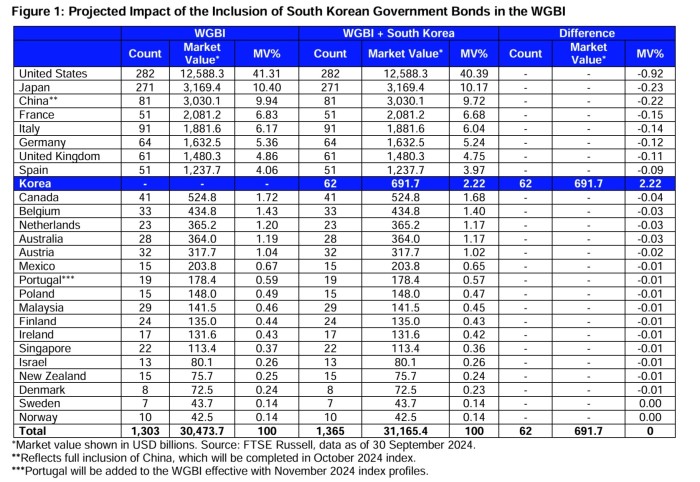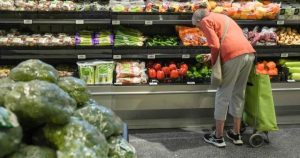Wigby finally embraces South Korea

Unlock the Editor’s Digest for free
Roula Khalaf, Editor of the FT, selects her favourite stories in this weekly newsletter.
Last night, FTSE Russell released the results of its semi-annual bond index inclusion review, and the big news is that South Korea is going to be included in the index provider’s flagship fixed income index:
FTSE Russell congratulates the South Korean Ministry of Economy and Finance (MOEF) on its efforts to expand and encourage global investment in its local government bond market by implementing changes that have met the rigorous criteria for WGBI inclusion, as well as its ongoing commitment to addressing the practical feedback of international bond investors participating in its evolved market structure.
WGBI stands for World Government Bond Index, and “Wigby” is a big deal for fixed income markets. JPMorgan’s EMBI indices are the most influential when it comes to the developing world, but Wigby is probably the most widely-used global government bond benchmark.
FTSE also said it would add India to its own EM bond indices, but South Korea’s inclusion — after two years on the watch list — is going to create the far bigger splash, given the size of its bond market and the greater importance of Wigby. Goldman Sachs estimates that about $2.5tn follows the index.
The inclusion of 62 South Korean bonds with a value of roughly $692bn, will only start in November next year, and take a year to complete in four quarterly phases.
By the end of the process FTSE Russell estimates that SK will have a 2.2 per cent weighting in Wigby. That’s greater than that of Canada or the Netherlands, about twice the heft of Australia and more than three times that of Mexico.
South Korea’s inclusion will come at the cost of the dominant US weighting, which will drop by almost a percentage point. The US fixed income markets can probably survive this — their weighting will still be about 40.4 per cent — but it could prove more meaningful for the likes of China, which will see its Wigby contribution dip by 0.2 per cent to 9.7 per cent.

The immediate market impact will probably be muted by the fact that the inclusion timeframe is so long, but Goldman Sachs estimates that passive funds will buy about $50bn–$60bn and active funds another $10bn or so across the inclusion process.
SocGen’s Kiyong Seong reckons that the longer-run impact will be even more meaningful — especially if investors in Japan, the Saudi Arabia of savings — begin to shift their allocations as a result
We anticipate an initial 10-20 basis point rally in the belly of the Korea rates, and the USD/KRW rate is expected to decrease by more than 10 won, reaching the 1320-1330 level. We reaffirm our stance that Japanese investors will play a crucial role in the impact of Korea’s inclusion in the FTSE WGBI. Given their customary conservative approach, it is unlikely that these investors will significantly increase their exposure to Korean fixed income markets before September 2025. However, we remain optimistic that Japanese investors will gradually begin to invest in the Korean fixed income market, taking into account FTSE’s review schedule.
This might seem like a weird, niche thing only of interest to indexing dorks like us (well, OK, the author). But the reality is that benchmarks are increasingly influential in deciding global capital flows, and their importance is only going to grow.
Further reading:
— Brookfield wants to move for some US index fund love (FTAV)
— Steering capital: the growing private authority of index providers in the age of passive asset management (Review of International Political Economy)
— Index providers are massively dull — and massively profitable (FTAV)
#Wigby #finally #embraces #South #Korea





